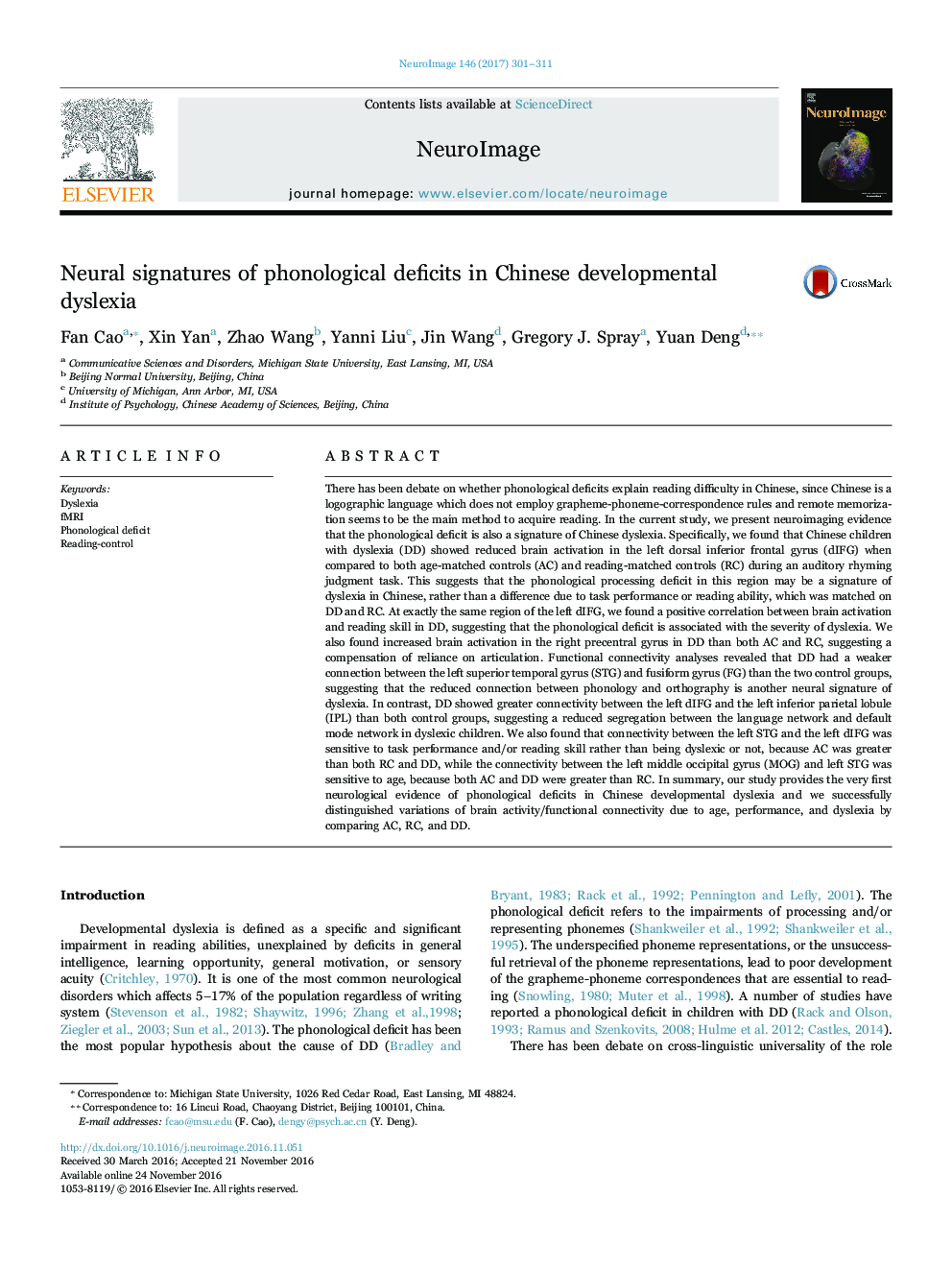| کد مقاله | کد نشریه | سال انتشار | مقاله انگلیسی | نسخه تمام متن |
|---|---|---|---|---|
| 5631341 | 1580864 | 2017 | 11 صفحه PDF | دانلود رایگان |
- Phonological deficit is characterized by less activation in the left dIFG.
- Dyslexia is associated with weaker functional connectivity from the left STG to FG.
- Task performance effect was identified by comparing AC to DD and RC.
- Age effect was identified by comparing RC to AC and DD.
There has been debate on whether phonological deficits explain reading difficulty in Chinese, since Chinese is a logographic language which does not employ grapheme-phoneme-correspondence rules and remote memorization seems to be the main method to acquire reading. In the current study, we present neuroimaging evidence that the phonological deficit is also a signature of Chinese dyslexia. Specifically, we found that Chinese children with dyslexia (DD) showed reduced brain activation in the left dorsal inferior frontal gyrus (dIFG) when compared to both age-matched controls (AC) and reading-matched controls (RC) during an auditory rhyming judgment task. This suggests that the phonological processing deficit in this region may be a signature of dyslexia in Chinese, rather than a difference due to task performance or reading ability, which was matched on DD and RC. At exactly the same region of the left dIFG, we found a positive correlation between brain activation and reading skill in DD, suggesting that the phonological deficit is associated with the severity of dyslexia. We also found increased brain activation in the right precentral gyrus in DD than both AC and RC, suggesting a compensation of reliance on articulation. Functional connectivity analyses revealed that DD had a weaker connection between the left superior temporal gyrus (STG) and fusiform gyrus (FG) than the two control groups, suggesting that the reduced connection between phonology and orthography is another neural signature of dyslexia. In contrast, DD showed greater connectivity between the left dIFG and the left inferior parietal lobule (IPL) than both control groups, suggesting a reduced segregation between the language network and default mode network in dyslexic children. We also found that connectivity between the left STG and the left dIFG was sensitive to task performance and/or reading skill rather than being dyslexic or not, because AC was greater than both RC and DD, while the connectivity between the left middle occipital gyrus (MOG) and left STG was sensitive to age, because both AC and DD were greater than RC. In summary, our study provides the very first neurological evidence of phonological deficits in Chinese developmental dyslexia and we successfully distinguished variations of brain activity/functional connectivity due to age, performance, and dyslexia by comparing AC, RC, and DD.
Journal: NeuroImage - Volume 146, 1 February 2017, Pages 301-311
